November 11, 2024 · 9 min read
How to Leverage Meeting Analytics to Drive Student Success Strategies

Shaimaa Badawi
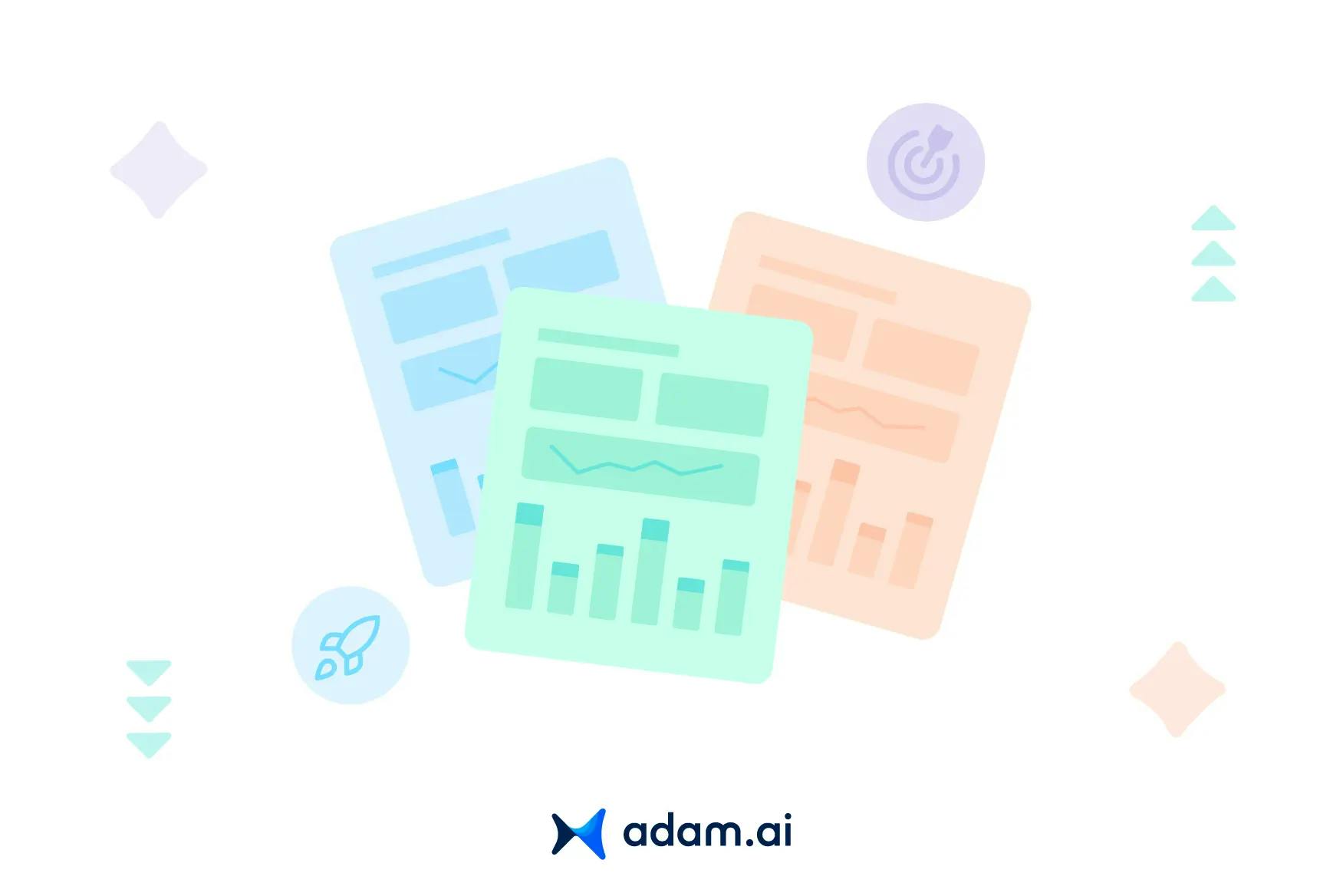
Universities are constantly seeking innovative ways to enhance student success initiatives. While strategic discussions play a pivotal role, the key to impactful outcomes lies in leveraging meeting analytics. In this article, we explore how meeting analytics drives student success strategies and how modern tools empower universities to optimize collaboration and decision-making.
What is meeting analytics, and why is it relevant in higher education?
Meeting analytics refers to the process of collecting, analyzing, and interpreting data from meetings to uncover insights that can drive more effective decision-making and improve outcomes. This involves tracking metrics such as participation rates, action completion, discussion trends, and decision-making efficiency. By transforming meeting data into actionable intelligence, organizations can refine their strategies, identify areas for improvement, and foster accountability.
In higher education, meeting analytics plays a pivotal role in addressing complex challenges like student retention, academic performance, and resource optimization. Universities rely heavily on collaborative discussions involving faculty, administrators, and external stakeholders to design and implement student success strategies. Meeting analytics ensures these discussions are purposeful, outcomes are measurable, and decisions align with institutional goals.
For example, analyzing the frequency and outcomes of meetings related to advising or academic support programs can reveal patterns that inform targeted interventions. By leveraging meeting analytics, universities can create data-driven strategies that empower them to adapt to the unique needs of their students and improve their overall success rates.
How can meeting analytics support student success initiatives?
Meeting analytics supports student success initiatives by providing actionable insights that enhance collaboration, streamline decision-making, and ensure accountability. Here’s how it plays a vital role:
1. Tracking progress on action items
Meeting analytics allows institutions to monitor the completion of tasks related to student success programs, ensuring that interventions and strategies are implemented effectively and on time.
2. Identifying participation gaps
By analyzing attendance and engagement during meetings, universities can pinpoint underrepresented voices, ensuring all stakeholders, including faculty, students, and advisors, are actively involved in discussions.
3. Aligning goals with measurable outcomes
Meeting analytics links discussion topics to institutional objectives, ensuring that meetings consistently drive actionable steps toward improving retention, academic performance, or support services.
4. Enhancing resource allocation
Analytics can reveal inefficiencies or bottlenecks in decision-making processes, helping universities allocate resources more effectively to maximize their impact on student success initiatives.
5. Evaluating program effectiveness
By reviewing trends and recurring themes in meeting discussions, universities can assess which strategies are working and where adjustments are needed.
6. Facilitating real-time adjustments
Meeting analytics provides data on the immediate effectiveness of decisions, enabling stakeholders to make timely course corrections for ongoing student success programs.
What are the key metrics universities should track using meeting analytics?
To maximize the impact of meeting analytics on student success initiatives, universities should focus on key metrics that provide actionable insights into their processes and outcomes. These include:
- Attendance rates: Track who attends meetings to ensure all relevant stakeholders, such as faculty, advisors, and administrators, are actively participating. This ensures balanced representation and inclusive decision-making.
- Action item completion: Monitor the percentage of tasks assigned during meetings that are completed within the set timeframe. High completion rates indicate effective follow-through and accountability.
- Meeting frequency and duration: Analyze how often meetings occur and their average length. This helps identify inefficiencies, such as overly frequent or lengthy meetings, which can detract from productivity.
- Discussion focus areas: Track the topics discussed most frequently and their alignment with institutional priorities, such as student retention or curriculum enhancement. This ensures meetings stay on target.
- Stakeholder engagement levels: Measure participation rates during discussions, use of collaborative tools like polls or comments, and the diversity of input provided. Higher engagement reflects stronger stakeholder commitment.
- Decision-making efficiency: Evaluate the time taken to arrive at actionable decisions and the proportion of agenda items resolved. Faster decision-making indicates more productive meetings.
- Program impact metrics: Link meeting outcomes to broader student success indicators, such as improved retention rates, higher GPA averages, or increased student engagement, to measure the real-world effects of decisions made.
- Recurring bottlenecks: Identify issues or delays that frequently arise in meetings, such as unresolved agenda items or lack of stakeholder alignment, to address and streamline processes.
How do meeting analytics improve collaboration in student success programs?
Meeting analytics enhances collaboration in student success programs by fostering transparency, accountability, and data-driven decision-making among stakeholders. Here’s how:
1. Identifying collaboration gaps
Meeting analytics tracks participation rates and engagement levels, helping universities identify departments or individuals who may not be fully involved. This ensures all relevant stakeholders contribute to discussions.
2. Facilitating shared accountability
Analytics tools track action items and deadlines, ensuring that responsibilities are clear and progress is visible to all participants. This transparency motivates stakeholders to fulfill their roles effectively.
3. Encouraging data-informed discussions
Meeting analytics provides insights into past decisions, ongoing challenges, and program performance, giving stakeholders the context needed to engage in meaningful, goal-oriented discussions.
4. Streamlining cross-departmental efforts
By analyzing meeting outcomes, universities can identify areas where different departments need to align their efforts, reducing silos and fostering a more collaborative approach.
5. Highlighting effective practices
Analytics can reveal which meeting formats, communication strategies, or program initiatives have been most successful, encouraging stakeholders to adopt and build upon proven methods.
6. Providing real-time feedback
Stakeholders can use live data from meeting analytics to evaluate the immediate impact of discussions and decisions, allowing for faster adjustments and stronger collaborative efforts.
What role does real-time data play in enhancing student outcomes?
Real-time data is a powerful tool for improving student outcomes by enabling universities to respond quickly to challenges, optimize strategies, and tailor interventions. Here’s how it drives success:
1. Proactive identification of at-risk students
Real-time data allows institutions to monitor academic performance, attendance, and engagement levels. This helps identify students who are struggling early, enabling timely interventions such as tutoring or counseling.
2. Tailored student support
By analyzing real-time insights into individual learning behaviors, universities can deliver personalized resources, such as customized learning materials or adaptive course content, to address specific needs.
3. Informed decision-making
Administrators and faculty can use real-time data to evaluate the effectiveness of ongoing initiatives, adjusting strategies dynamically to achieve better outcomes.
4. Enhanced program evaluation
Continuous tracking of student performance metrics, such as course completion rates or participation in support programs, ensures that institutions can fine-tune their approaches in real-time to maximize impact.
5. Optimized resource allocation
Real-time data provides insights into which programs, courses, or services require additional resources, allowing institutions to prioritize investments that directly benefit students.
6. Improved communication and collaboration
Real-time dashboards and analytics tools facilitate immediate information sharing among faculty, advisors, and administrators, ensuring a unified approach to student success
How can universities integrate meeting analytics into their decision-making processes?
Integrating meeting analytics into university decision-making processes involves leveraging data-driven insights to enhance collaboration, accountability, and strategic planning. Here’s how universities can effectively adopt meeting analytics:
- Establish clear goals for analytics: Define what the institution aims to achieve through meeting analytics, such as improving retention rates, enhancing academic programs, or streamlining student support services.
- Adopt centralized platforms: Use platforms that consolidate meeting data, agendas, minutes, and action items into a single repository. This ensures easy access to insights and promotes transparency.
- Train stakeholders in data literacy: Equip faculty, administrators, and advisors with the skills to interpret and act on analytics insights. Regular workshops and training sessions can help stakeholders understand how meeting data translates into actionable decisions.
- Incorporate analytics into regular reporting: Make meeting analytics a standard part of institutional reports, providing leadership with clear metrics on participation, decision-making efficiency, and the implementation of action items.
- Link analytics to institutional metrics: Tie meeting outcomes to broader university KPIs, such as graduation rates, student satisfaction, or resource allocation efficiency. This ensures decisions are aligned with strategic objectives.
- Enable real-time feedback loops: Use analytics tools that provide immediate insights during or after meetings, allowing stakeholders to evaluate the effectiveness of discussions and make timely adjustments.
- Monitor and evaluate outcomes: Continuously track how meeting-derived decisions impact institutional goals. Use this data to refine processes and ensure the analytics approach remains relevant and effective.
What are the long-term benefits of using meeting analytics for student success strategies?
Meeting analytics provides a foundation for sustainable improvements in student success strategies, offering long-term benefits that enhance both institutional efficiency and student outcomes. Here are the key advantages:
- Enhanced accountability: By tracking action items and responsibilities, meeting analytics ensures that stakeholders consistently follow through on decisions, creating a culture of accountability that drives sustained improvements in student success programs.
- Data-driven decision-making: Over time, meeting analytics builds a repository of valuable insights, enabling universities to make informed, evidence-based decisions that evolve with student needs and institutional priorities.
- Optimized resource allocation: Analytics reveals trends and patterns that help institutions allocate resources more effectively, ensuring investments are directed toward initiatives that yield the highest impact on student success.
- Improved collaboration: With clear visibility into meeting outcomes and stakeholder participation, analytics fosters a more collaborative environment. This strengthens relationships across departments and ensures unified efforts in achieving shared goals.
- Continuous improvement: Meeting analytics highlights inefficiencies and recurring challenges, enabling institutions to refine their strategies and processes continuously for better outcomes over time.
- Alignment with institutional goals: By tying meeting outcomes to long-term institutional objectives, such as retention rates or academic excellence, analytics ensures that efforts remain aligned with the university’s mission and vision.
- Scalable strategies: Analytics supports the development of scalable programs that can adapt to growing student populations or changing educational landscapes, ensuring long-term institutional resilience.
- Enhanced student outcomes: Over time, the insights gained from meeting analytics contribute to improved retention rates, higher graduation rates, and better overall student experiences, solidifying the university’s reputation for excellence.
How does adam.ai optimize meeting analytics for universities?
adam.ai supports universities in leveraging meeting analytics to enhance student success by integrating features that promote collaboration, transparency, and data-driven decision-making:
- Agenda builder: Craft detailed agendas with specific time allocations for student success discussions, ensuring meetings stay focused and all stakeholders’ contributions are addressed.
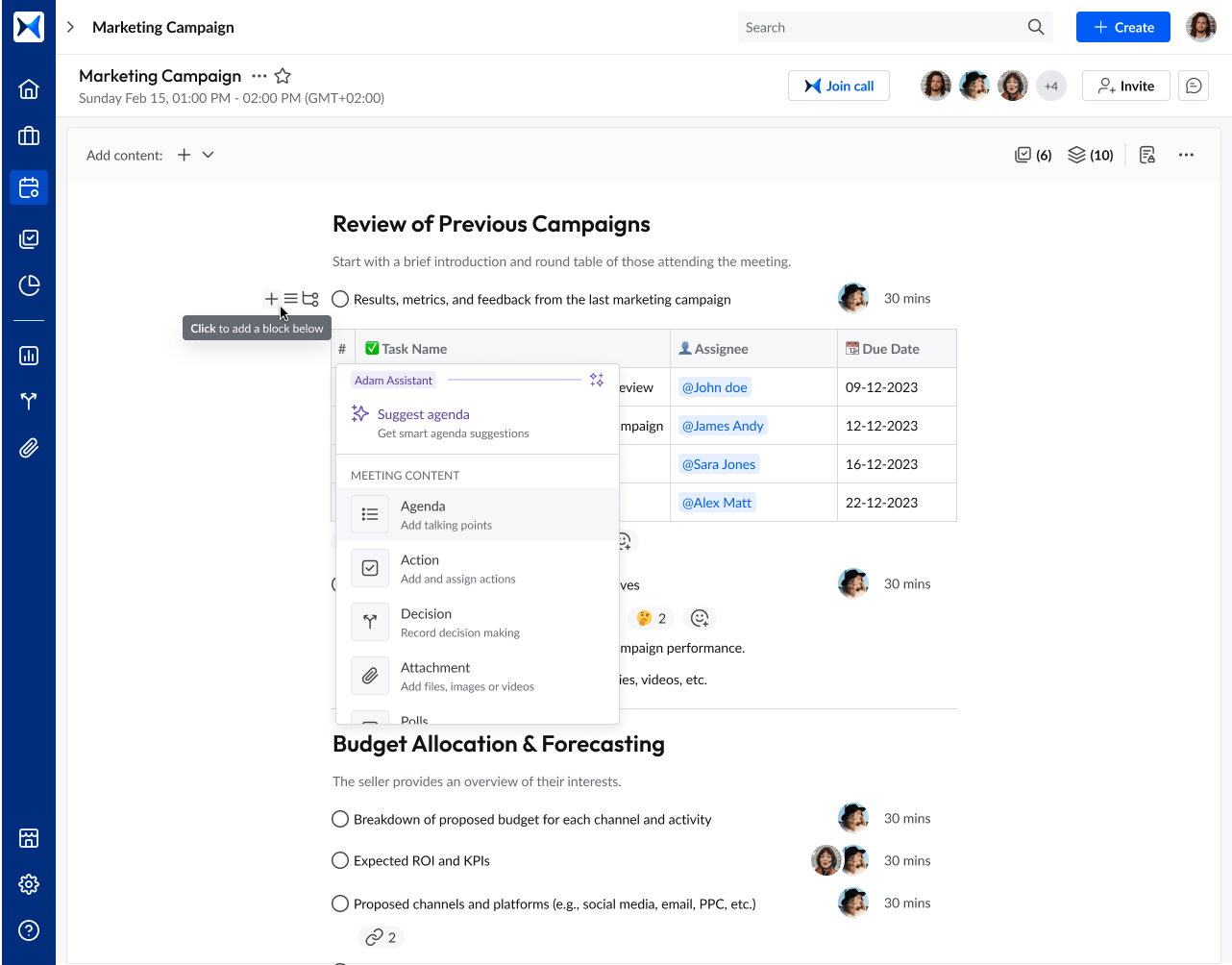
- Real-time collaboration tools: Use live polls, comments, and reactions to foster active engagement during meetings about student success strategies, allowing for immediate input from diverse stakeholders.
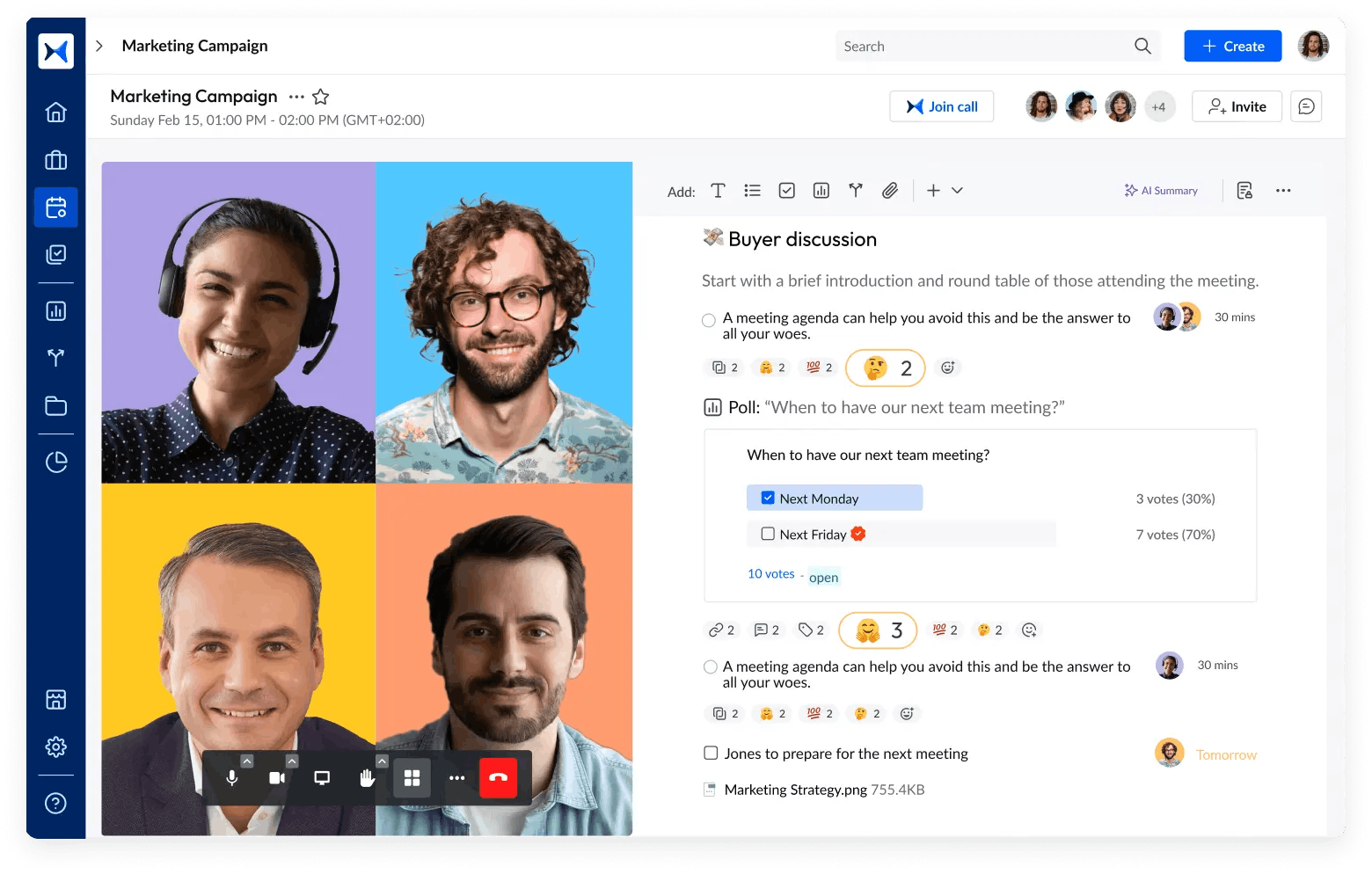
- Action management: Assign, delegate, and track tasks from student-focused initiatives, ensuring accountability and timely follow-through to achieve program goals.
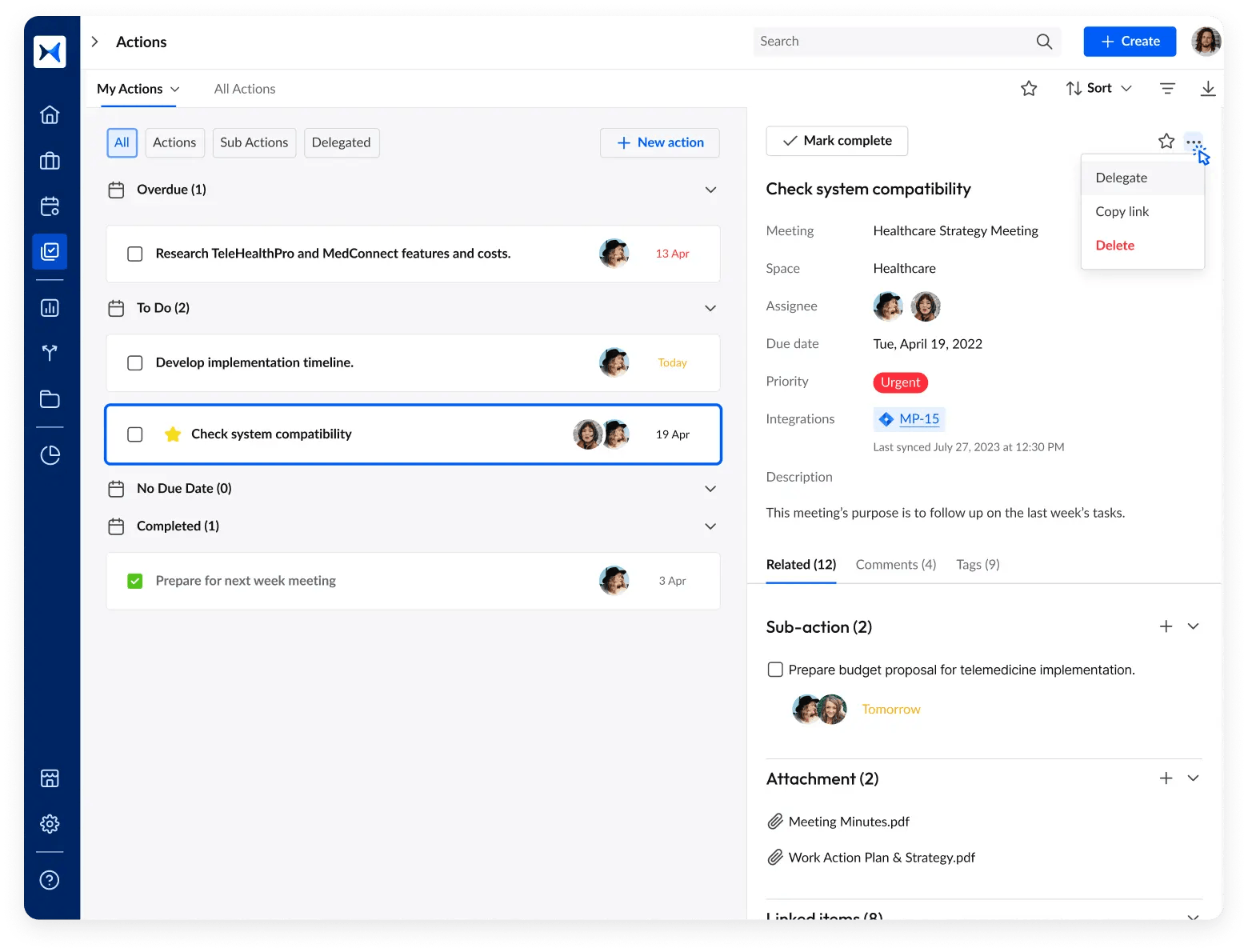
- Meeting minutes and approval cycles: Generate, share, and finalize meeting minutes to document key decisions and discussions on student success initiatives, promoting transparency and alignment.
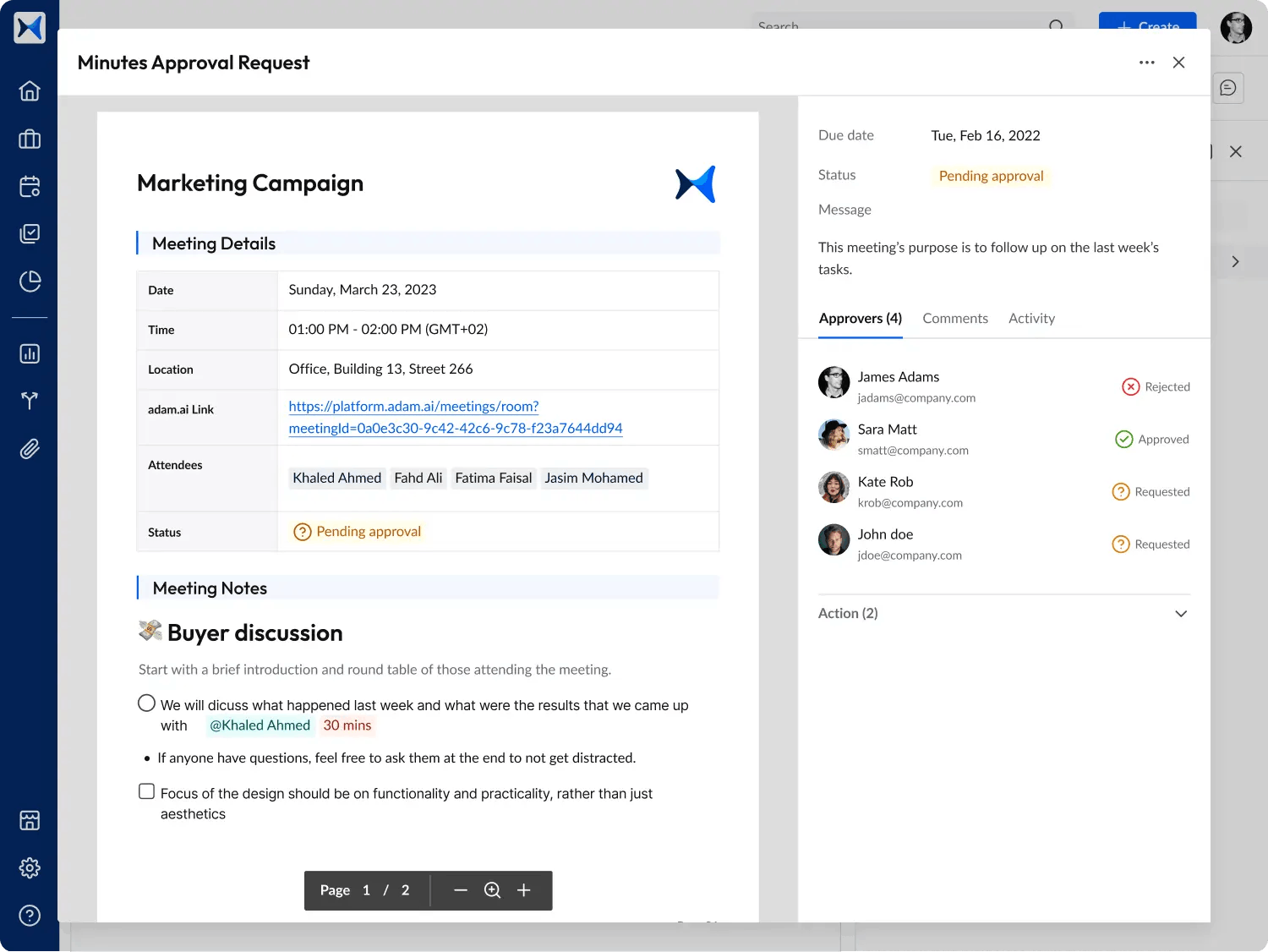
- Analytics dashboards: Track metrics such as participation rates, task completion, and meeting outcomes to evaluate the effectiveness of discussions related to student success programs.
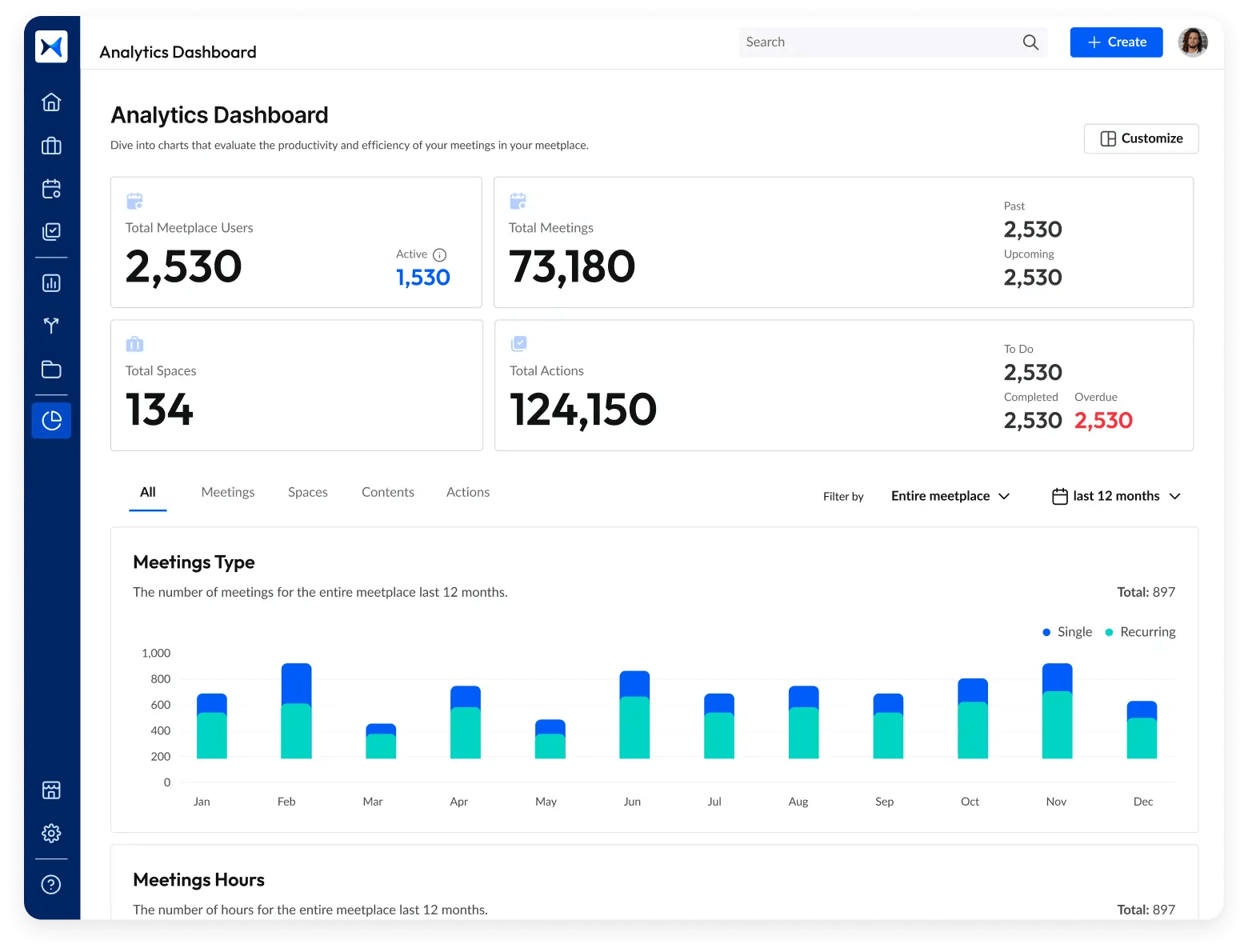
- Multi-space management: Organize meetings into categories such as academic programs, student services, or cross-departmental initiatives, maintaining a structured record of progress on student success strategies.
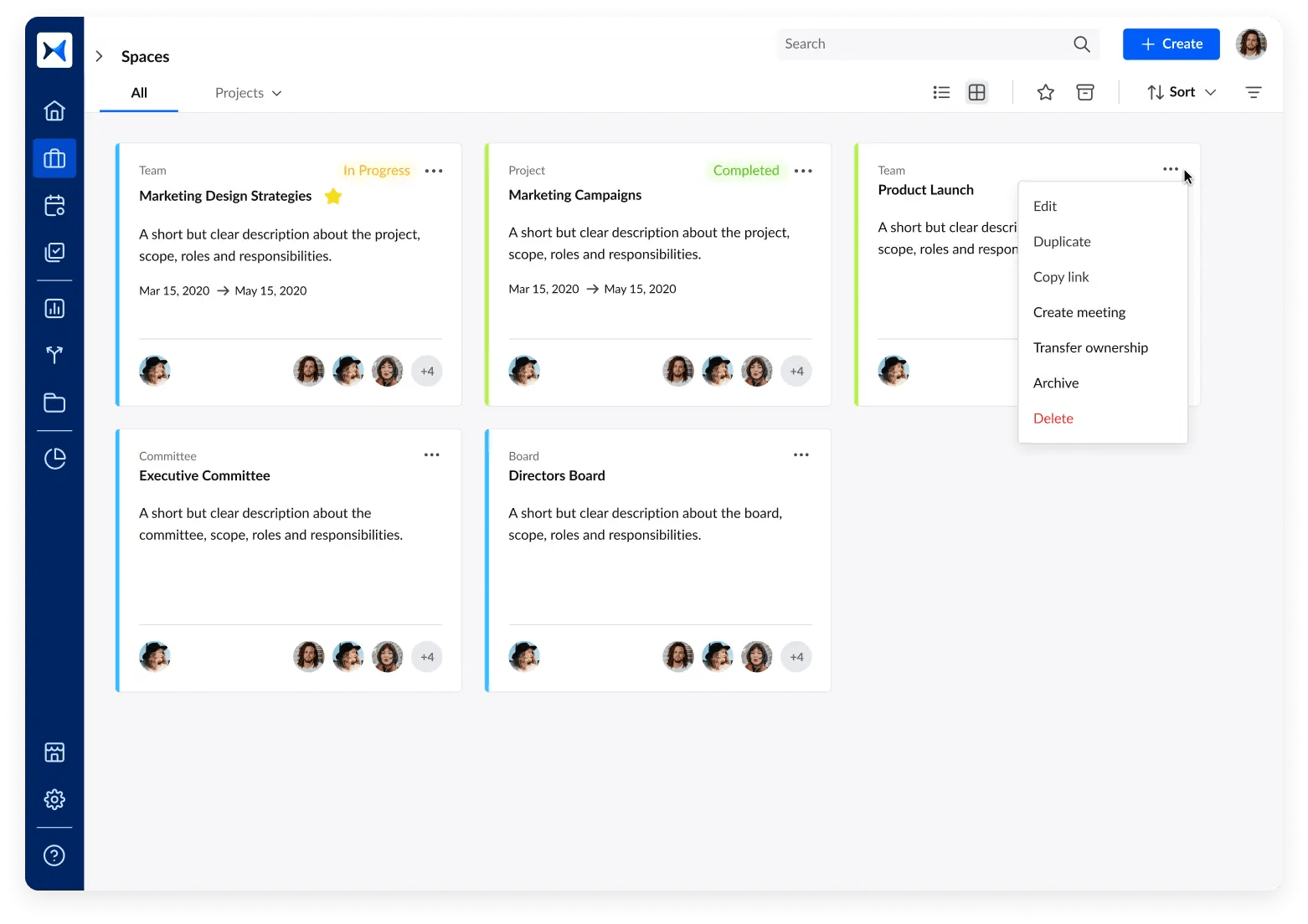
Transform how you conduct critical meetings—From meticulous preparation to effective execution and insightful follow-up, adam.ai integrates comprehensive analytics, full customization, and intuitive interfaces with powerful meeting management tools.
Easy onboarding. Enterprise-grade security. 24/7 dedicated support.
The bottom line
Meeting analytics has revolutionized how universities approach student success, turning discussions into measurable outcomes. With tools like adam.ai, institutions can streamline processes, foster collaboration, and ensure every decision is driven by data and aligned with student needs.
And while there may be multiple solutions available, here is why adam.ai is the meeting management software platform you can trust:
- adam.ai is one of Atlassian Ventures' portfolio companies.
- In the meeting management software category on G2, adam.ai has been ranked a leader and a high performer for successive quarters in the past years.
- adam.ai has been included in the Forrester Report in the AI-enabled meeting technology landscape.
- adam.ai is trusted and used by powerful teams and organizations worldwide for all types of critical meetings, like board, committee, project management, and business development meetings.
- And most importantly, adam.ai integrates with your existing workflow, is SOC2 compliant, provides dedicated support and success, and has a free trial option.
Subscribe to adam.ai blog
Stay ahead with the latest insights—get our newest blog posts, tips, and updates sent straight to your inbox.